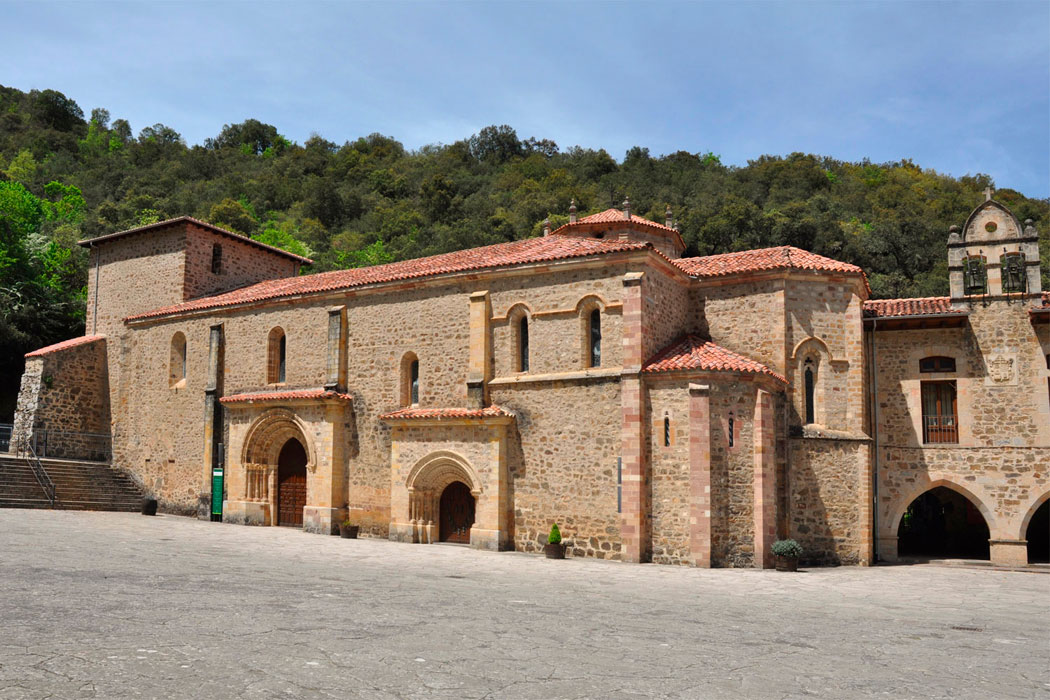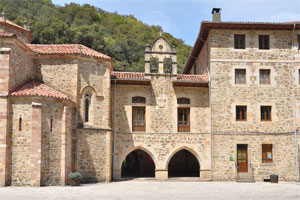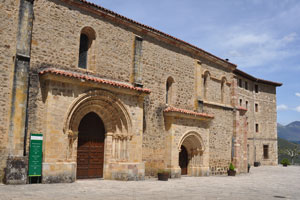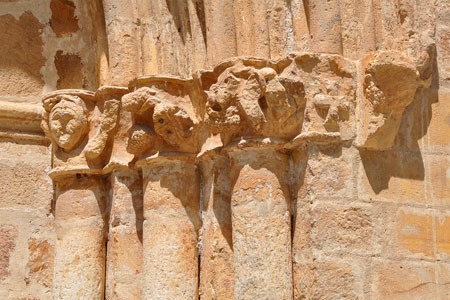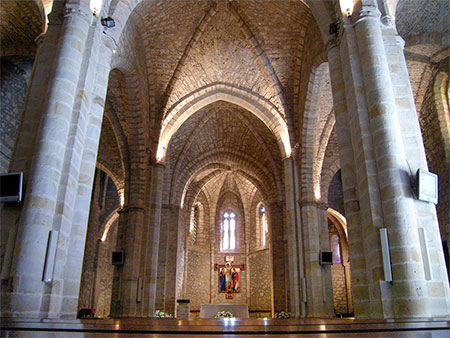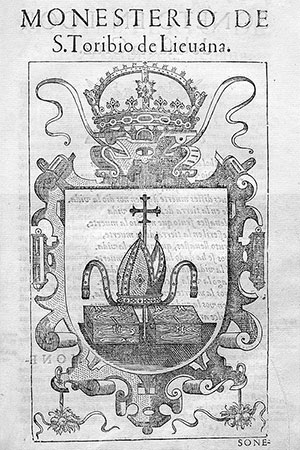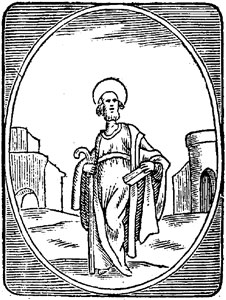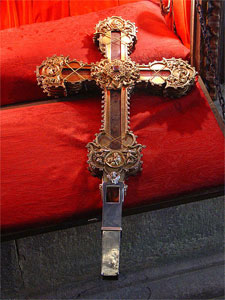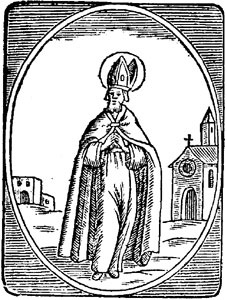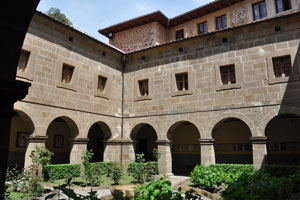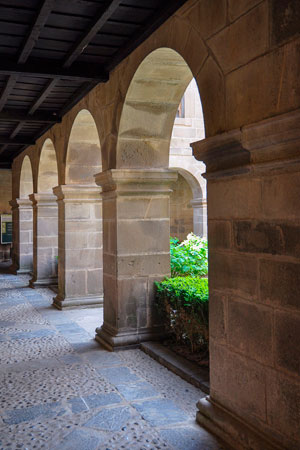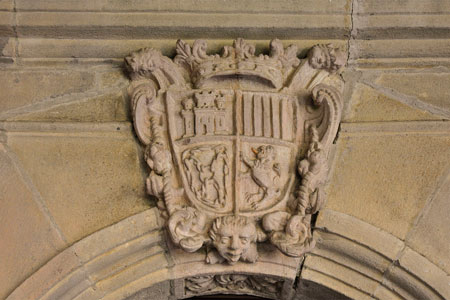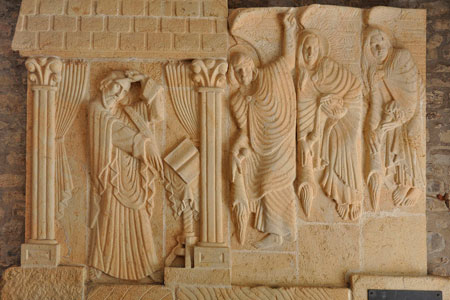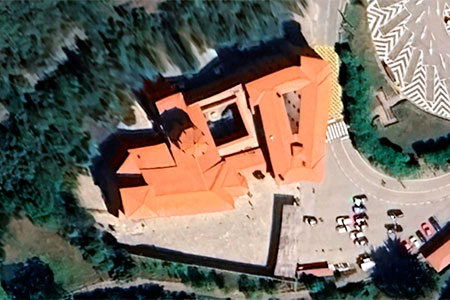In the region of Liébana, where the monastery of Santo Toribio is located, several monastic settlements were founded, and Alfonso I (?-757) was one of their promoters, following his policy of settlements with the aim of consolidating repopulation tasks. The details of the founding of this establishment are surrounded by legends, some of which present contradictory accounts.
One of these stories features Bishop Turibius of Astorga, who in the 5th century is said to have brought the relic of the True Cross from the Holy Land. A second legend speaks of another Turibius and some companions, cenobites, who settled in these lands in the 6th century, founding a monastery dedicated to Saint Martin. Possibly, during the time of the Saracen invasion (8th century), refugees arrived from southern lands, bringing with them the precious relics. Although the origin of the monastery would be placed during the reign of King Alfonso I, that is, during the second half of the 8th century, it is not until the year 828 that documentary evidence of its existence appears.
The 828 document is a donation in favor of the monastery, an establishment that developed similarly to others in this territory, which, due to its geographical location, was more protected from potential Islamic incursions. At that time, the house was known as San Martín de Turieno (likely referring to Saint Martin of Tours). The arrival of the relics of Saint Turibius of Astorga contributed to its development thanks to the influx of devotees. During the 10th century, the monastery experienced a period of great vitality, and numerous donations were made in its favor, a situation that would continue through the 11th century.
In 1125, the monastery underwent a change, when it began to be known as San Martín y Santo Toribio, until, from 1181 onwards, it was simply called Santo Toribio de Liébana. In 1183, King Alfonso VIII of Castile gave the monastery and its possessions to Count Gómez, who then donated it to San Salvador de Oña, making it a priory of that Burgos monastery. During the 13th century, it was rebuilt in Gothic style. In the following centuries, the house experienced some decline, though less pronounced than that of other monasteries in the region, likely due to the presence of the much-venerated True Cross. It remained active until the exclaustration in 1835. From 1961, conventual life returned with a Franciscan community.
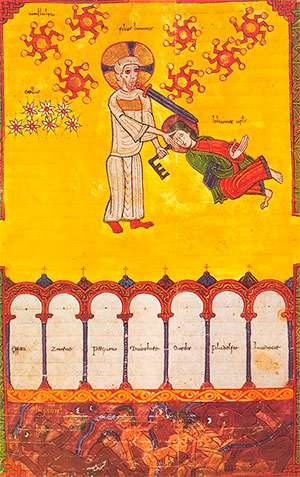
Beatus of Osma
Image from Wikimedia
Beatus of Liébana
One of the most well-known figures in connection with the monastery of San Martín de Turieno is Beatus of Liébana (?-c. 800), considered a saint. This figure was a monk at this monastery, where, at the end of the 8th century, he wrote the Commentary on the Apocalypse, a work that was widely disseminated and is well known through its copies, or "Beatus". Some of these copies were illustrated with miniatures that have made them unique. Nearly thirty Beatus manuscripts are known, some well-preserved but others quite fragmentary.
- ARGAIZ, Gregorio de (1675). La soledad laureada por San Benito y sus hijos en las Iglesias de España. Vol. 6. Provincia de Asturias y Cantabria. Madrid: Zafra
- CAMPUZANO Enrique (2003). Santo Toribio de Liébana. Santillana del Mar: Museo Diocesano
- CUESTA BEDOYA, Jesús; i altres (1997). Localización de los antiguos monasterios de Liébana. Clavis, núm. 1
- GARCÍA GUINEA, Miguel Ángel; dir. (2007). Enciclopedia del Románico en Cantabria. Aguilar de Campoo: Fundación Santa María la Real
- GONZÁLEZ JIMÉNEZ, Manuel (2009). Beato de Liébana, profeta del milenio. Boletín de la Real academia Sevillana de Buenas Letras. Núm. 37
- GRIJUELA GIL, Carmen (2015). Santa María de Piasca y Santo Toribio: dos monasterios en el territorio medieval lebaniense. Altamira, vol. 86
- JUSUÉ, Eduardo (1892). Monasterio de Santo Toribio de Liébana. Madrid: Angel B. Velasco
- MINGUET, Pablo (1749). Diario sagrado y kalendario general. Primera parte. Madrid: J. Zuñiga
- SANDOVAL, Prudencio de (1601). Primera parte de las fundaciones de los monesterios del glorioso Padre San Benito. Madrid: L. Sánchez
